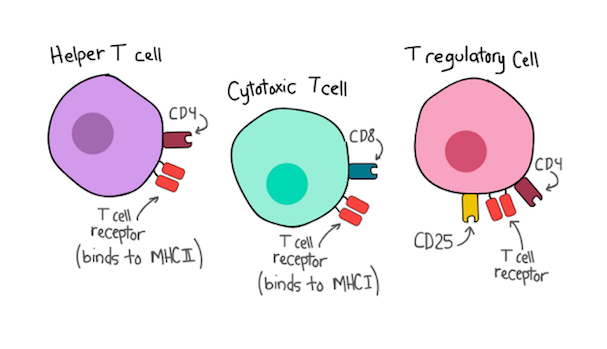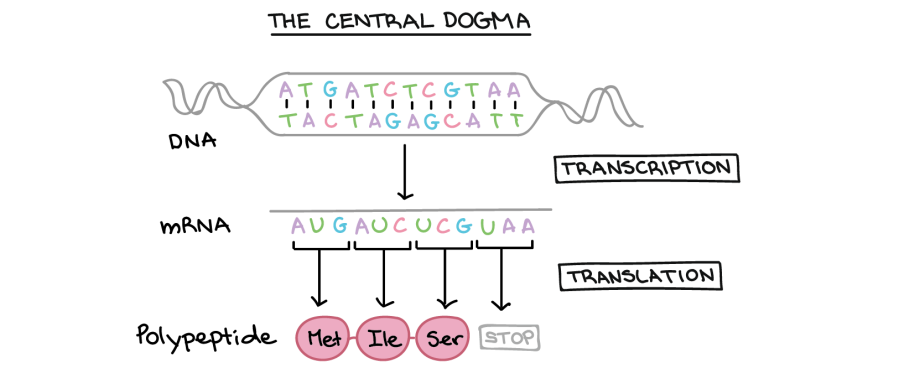Have you heard that female scientists exist but can’t actually name one? Ever wonder what they might be up to? You’ve come to the right place! ScienceGrrl Glasgow is serving up interviews with real-life female scientists – and they’re really interesting.

Dr Hilary Sheppard
Senior Lecturer
School of Biological Sciences
University of Auckland
My research focus is to improve cells for use in the clinic. One cell type that we are currently interested in is a type of immune cell called a T cell. A T cell can recognise and kill cancer cells and so it can be a useful therapy for cancer. However, some cancer cells have properties which mean that they avoid being detected by the immune system. We are developing methods to engineer T cells in the lab which will ensure that their full cancer-killing potential is unleashed. To do this we plan to alter the expression of key molecules within the T cell using CRISPR/Cas9 genome engineering technology.

Learn more about T-cells and immunity:
Khan Academy – Adaptive Immunity
In a separate project we are applying the same genome engineering technology to human skin cells. Our aim here is to generate patient-specific gene-edited skin sheets for people with a rare condition called Epidermolysis Bullosa (EB). People with EB have very fragile skin due to a mutation in a gene which forms the cellular glue for skin cells. We plan to take a small sample of patient skin, fix the defective gene and generate large sheets of skin in the lab which can be used to replace problematic areas of skin on the patient.
What made you get into science?
I have always loved biology and the natural world – I would spend hours rock pooling and watching tadpoles metamorphose into frogs as a child. Now I teach frog development in one of my developmental biology courses!
Do you have a favourite science fact?
Oooh that’s a tricky one – there are so many! If you like weird science facts I’d recommend following @weird_sci on Twitter. They recently tweeted that “Cockroaches were older to dinosaurs than dinosaurs are to us”.
What is the best part of being a scientist?
I love the fact that we are always learning and that we can’t ever say that our current truth is actually correct. For example, the central dogma proposed by Sir Francis Crick in 1957 – the idea that DNA encodes for RNA which encodes for protein – was taught as fact when I was at university. When non-coding RNA’s were shown to function in humans about twenty years ago the central dogma and my world were literally turned upside down! It’s so exciting to watch these paradigm shifts emerge and it’s taught me to always keep an open mind.

What is the central dogma? Check out the resources below to learn more!
Khan Academy – The central dogma
Khan Academy – The central dogma (video)
Khan Academy – The central dogma revisited (video)
On a bad day, what inspires you to keep going?
As in any life there are good days and bad days – and bad days eventually turn into good days so sometimes it’s just a case of hanging in there long enough! If experiments don’t work out as planned I always try to remember the idea that you often learn more from unexpected results which challenge your original hypothesis.
What would you like people to know about your research?
We are using a genome engineering tool called CRISPR. This has been in the news a lot in the past few weeks as a Chinese scientist has allegedly used this tool to edit the genomes of twin girls. The first I heard about this was when scrolling through Twitter last Monday night (26th November, 2018). It was another moment in my career which I will not forget – I was shocked and appalled, I couldn’t sleep. I hoped it was a hoax, although sadly it seems it is probably true. Although this is an amazing technology we are not yet ready to use it on human embryos – this scientist appeared to be working well outside the normal ethical and moral constraints that the international scientific community adheres to. In my lab we are using this technology to edit the genomes of somatic cells (all cells in the body except reproductive cells), taken from fully-consenting adults. The genetic changes we make will not be inheritable. I hope that the #CRISPRbabies fiasco does not taint or inhibit progress in this field of research which has so much clinical promise.
Want to learn more about CRISPR/Cas9? Check out the videos below!
Genome Editing with CRISPR-Cas9
CRISPR-Cas9 gene editing and how it works – with Jennifer Doudna
Your Guide to Understanding How CRISPR Works
What would you like people to know about working in science?
I’ll share with you some lessons I have learnt on my journey so far:
1. Follow your path and do your own thing, when it suits you.
When I left school there was an expectation to go to university. Despite having good grades I didn’t like the idea of being on a conveyor belt of education – so I got off! I worked for two years in a microbiology lab and during this time I decided that OK, I did want to go to university – but at least the decision was made on my terms. Having time out gave me a very clear focus on what I wanted to do, which was to study biology.
I studied Applied Biology at the University of Bath in the UK. This was a great degree which I chose because it involved two 6 month placements in industry. By the time I finished my undergrad degree I’d worked in three very different lab environments which helped direct my future focus.
2. Work hard, play hard.
After carrying out an industry-sponsored PhD in plant molecular biology at the John Innes Institute in Norwich I decided that I wanted to do something more applied to human research. I transitioned to working with human cells with a cancer biology focus (specifically understanding the transcriptional regulation of the tumour suppressor gene p53) for my first post-doctoral position. This was at the University of California. Monday to Friday was work, work, work and then more work, but the weekend was spent out and about exploring all the amazing things on offer in California. It was a very productive two years and it probably helped to set me up for my present position in terms of publications and international experience.
3. Work to see the world.
Following a second post-doctoral position at the University of Leicester back in my home country England (working on co-activators of nuclear receptors and their regulation of gene-expression) I still had a travel bug. Having a PhD opens a world of opportunities so it was not hard to obtain a visa to work in both the US and then in NZ. I came to NZ on a two year visa to work as a staff scientist in a start-up biotech company called Genesis. That was 18 years ago! Genesis was a new company full of young, international scientists who, when the company finally disbanded, seeded themselves throughout the NZ science community. Those connections are still useful and I left Genesis over 14 years ago!
4. Don’t forget work-life balance.
I have two children who are now 11 and 13. When the eldest was one year old I started a series of part-time, short-term contracts working as a post-doc in an immunology lab at the University of Auckland. This meant I could keep my foot in the scientific door AND spend quality time with the kids when they were young – fantastic! In 2012 I was lucky enough to get a part-time lectureship at the University and I now work 4 days a week.
Lastly, what does a scientist do in their spare time?
The same as non-scientists – we are just people too, living our lives, raising our children, being part of our communities.

A fascinating discussion is definitely worth comment.
I do think that you need to publish more about this topic, it
may not be a taboo matter but generally people don’t talk about such subjects.
To the next! Many thanks!! http://utea.cc/comment/html/?19870.html
LikeLike